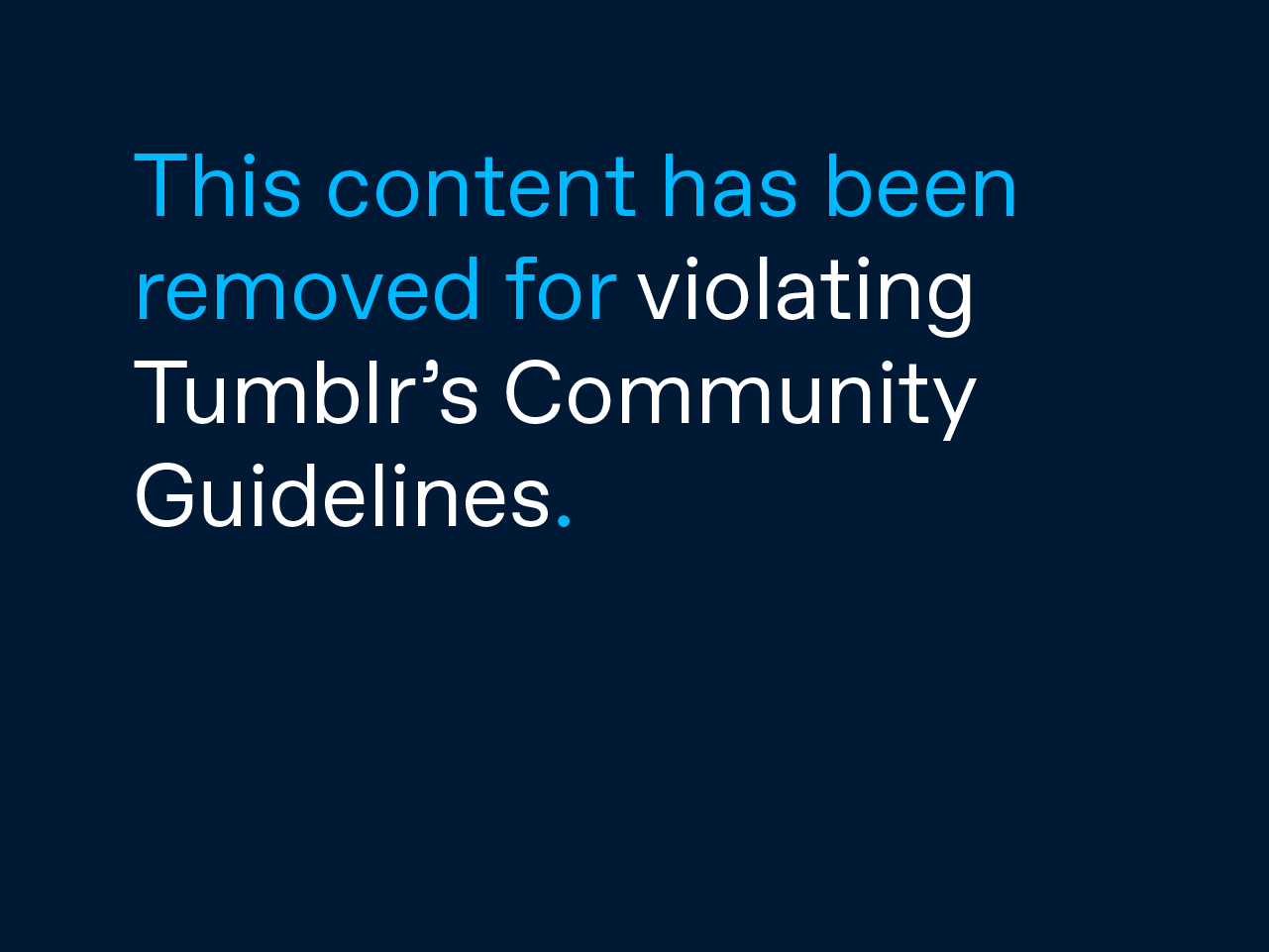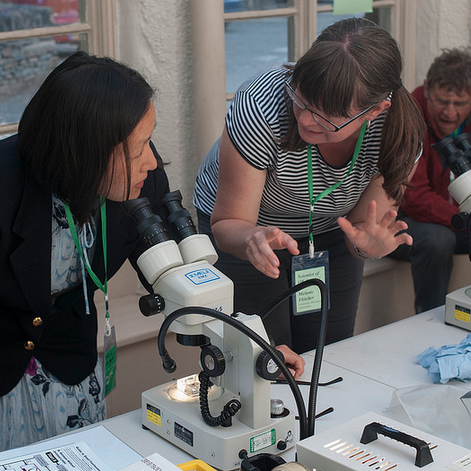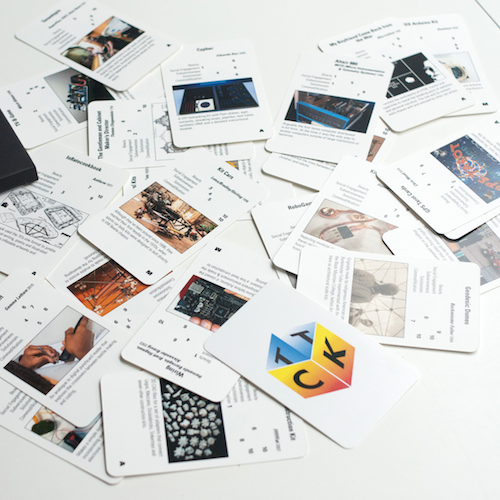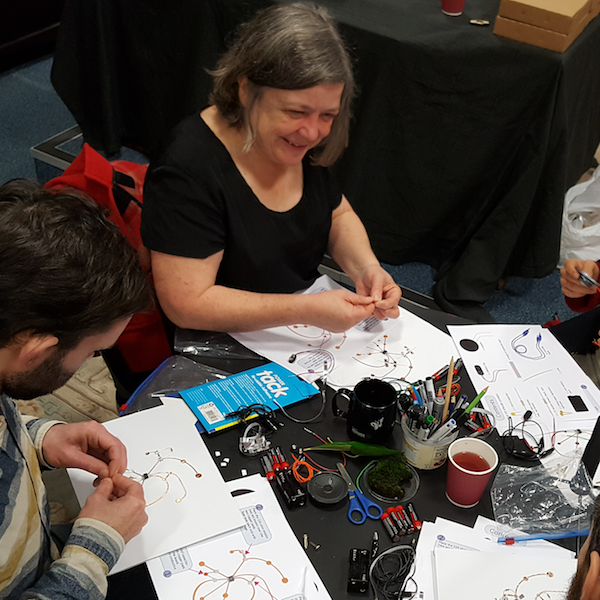Can I get A Witness? Observing The Real World, Machines, People and Knowledge as a Practice

"What we call the real world is the totality of existence and is at best.. a necessary element of our thinking processes – it is not the name of something we can directly encounter..."
"Aligning objectivity with reliability, and subjectivity with error, is to simultaneously misunderstand the core qualities of skilful practices while artificially canonising scientific techniques with an unwarranted infallibility that is thoroughly undeserved."
"Accepting my understanding of knowledge as a practice, we can see that the kind of subjective knowledges I have suggested here i.e. building, repairing, baking, painting, harmonising – not to mention tree climbing for squirrels – are genuine knowledge practices."
"They have the reliability that is the sign of knowledge, they produce facts as a side-effect of this reliability, and they are sustained by networks of practitioners... it begins to seem as if the adjective ‘subjective’ has become empty and vacuous: the knowledge of beings is knowledge. Objective knowledge – the knowledge teased from objects – is just a special case of knowledge, not its paradigm case."
Wikipedia Knows Nothing - Chris Bateman
The Kitchen Sink Theatre of Measurement
Last month I spent some time with Sam Skinner, Kei Kreutler, Helen Pritchard, Jennifer Gabrys, Neil Winterburn and Hwa Young Jung at the Theatre of Measurement event at FACT reflecting on “observation culture” in the The New Observatory exhibition at FACT curated by Hannah Redler Hawes (from the Open Data Institute) and artist researcher, Sam Skinner. I was presenting our Critical kits work in the context of Re-Dock’s practice, alongside presentations from artists and practitioners involved in what I think was a really important exhibition.
The event left everyone with much food for thought and since then, my reflections on it have been heavily influenced by some recent reading of the work of Chris Batemen, MacKenzie Wark and others.
It’s also resonated with my own work around Maker and IoT culture and as Domestic Science. Domestic Science is a space for myself and artist colleagues Hwa Young Jung and Glenn Boulter’s explorations of ‘domestic’ knowledge with respect to networked culture; the emerging cultures of data and connectivity that are now part of the fabric of domestic life, the ‘lifeworld’ of the everyday.
Domestic Science

It’s not uncommon for an average family to be aware of the concept of data; it inspires both indifference, fear and anxious hopes for job prospects, especially in the context of wildly ambitious claims for a tech literate post code-club society for the future. I see this ‘domestic’ knowledge as the actual lived data literacy that’s part of our supposed post-internet knowledge economy.
Clearly its a play and self conscious update on what constituted domestic science in the UK in the mid 20th century; but it’s no longer how to keep clothes clean or successful baking, but something else.
What sounded like science fiction from the perspective of the mid 1990s is now commonplace: People across all class & economic backgrounds produce and consume multiple digital information streams across social media, steal content from torrent sites and Kodi streams, children host minecraft servers and everyone has their good and bad password systems, facebook mistakes and trolling anecdotes alongside all the other worries of the over-developed world.
I see this domestic perspective as at least part of the context of the show in FACT and part of it’s:
“(invitation for) visitors to consider how everyday life is a subject of observation in which we all perform as our own micro-observatories, or ‘observatories of ourselves’. It asks us to reassess our roles as active citizens within a ‘surveillance’ culture,”
FACT is an influential art institution, and like similar organisations, it puts forward a strong rhetoric and remit for public service, engagement and access so thinking of it as a way of challenging domestic knowledge is important. I see much ‘creative tech’ exhibition work as the domestic end or UX of research; how it’s actually experienced outside of the specialist knowledge networks of researchers and artists working in this field; much more so than it being an artform in a way.
Observation Culture
My immediate response to The New Observatory was how pleased I was that the show traced back histories of observation through Liverpool’s maritime science past & present and placed it alongside contemporary observation of amateur radio and astronomy and then onto the civic innovations of an Internet Of Things (IoT) future, with a diverse range of work that explored and speculated around this. It was clear that there was a curiosity for the nuanced history around what might be called observation culture.
I like this term; it’s like a handy shorthand for the most basic human response to the world and whatever claims science makes it comes down to that base. From turn-of-the-century citizen science to the professionalised sciences, amateur weather watchers to supercomputer climate change models, dockmaster tide tables to the modern day logistics of super-containerisation: its all based on tireless observation and logging by people.
I remember 16 years ago working as a technician for an artist residency at Cammell Laird shipyards in Birkenhead (where my paternal grandfather worked) meeting someone in a little hut watching the tide with a radio for the shipyards alongside the tide tables gaffa taped to the wall. It seemed weird to still exist in a high tech shipyard alongside ship AIS, GPS and globally acknowledged tide timings; it was an early realisation for me of the ‘stack’ of expertise and experience not just in computer culture but across all of the infrastructure of society.
It’s a thing that we all get from time to time; what I like to call Infrastructure vertigo.
For every contemporary Tide prediction tool used there’s a lineage back to amateur tide watching and machines like the Doodson Lege Tide Machine made by Dr. Arthur Doodson at Bidston Observatory (what became the Proudman Oceanographic Laboratory, now part of NOC who I worked with on my Currently projects and an early shared interest with Sam.)
Like Sam I’m inspired by the communal experience and knowledge networks of amateur astronomy, planespotting and tide tables; the standing-on-the-shoulders-of-giants part of Infrastructure Vertigo. This is the basis for my own practice-based research into partipatory amateur cultures: Plane Spotters, Amateur Radio, citizen scientists, maker and game cultures using sensors and IoT.
Sam kindly got it touch as his early vision for the FACT show developed and together we thought of activity with the public that explored aspects of exhibition content but in the end we didnt take it further.
I liked how Sam’s curatorial approach was not purely celebratory nor speculative or a general review of the state of data culture. It seemed also to be built around contemporary thinking around knowledge as an embodied practice in situ, where context is king. All the work seems to connect to this somehow; I loved the Datacatchers by Interaction Research Studio at Goldsmiths University which felt akin to my text based obsession with Interactive Non Fiction
This and the Dustbox project by Citizen Sense seems to build on this embodied civic role, making sensors in intriguing porcelain cases (cast from 3D models of dust motes), almost like domestic ornaments, clearly playing with the design aesthetic of ‘scientific’ instruments.
What is Measurement? What is a fact?
I think of our current situation as a data culture; another extension of observation culture with it’s own vertigo. I use it to broadly talk of the post-internet culture of the ‘over-developed’ world where the internet and it’s infrastructure of services and economies is common place. Its a similar description of the information age or networked world, but its more descriptive in that it acknowledges a more abstracted idea of data; as a commodity and resource that impacts on both our everyday experience and our engineering and hacking of that world.
Chris Bateman’s Wikipedia Knows Nothing which despite it’s inflammatory title which could be read as antagonistic to data culture and valuable criticism of the ethics of anonomous peer review, I’ve found to be a handy plain speaking frame and primer for considering the Theatre of Measurement and wider data culture the New Observatory speculates around. It also touches all manner of epistemological thought, and the nature of how we ‘make’ knowledge.
For me it’s a refreshing review of what we actually mean when we talk about ‘objective data’ and the actual process of observing something in the real world. It seems like a really useful tool in reflecting on the often evangelical excitement of the potential of data in society.
I’ve found myself at times intoxicated by a fervour for data’s creative potential, in the engineering of a modest technical platform for observing and capturing DIY data and then designing a speculative space to interact with this ‘knowledge’ through the game Minecraft. The RF-Craft project was my form of participation in observation culture through the medium of educational IoT. However I have not really thought about what observation of reality really is and what I am actually doing when I make artwork inspired by engineering and citizen science.
Am I making subjective experiences to further validate objective data and established scientific method with no critical sensibility? Am I only playing with science literacy or am I some kind of methodological re-seller or STEM promoter? Do I actually understand what data is?
It’s not inconsequential that Chris is a game developer in addition to a philosopher, and it’s heartening to see someone in game culture (something as much part of network culture as embedded systems, IoT communities and reddit dialogues) applying critical thought to the actual implications of networked knowledge, rather than complacently accepting the terms and conditions of technology as a complex, inevitable, but essentially neutral or benevolent conduit for traditional content, that we know in our inherited “Guthenberg minds” as text or video.
I was struck by his reminder of knowledge as a practice and it’s relationship to so called objective reality; in particular a thought experiment over how we build up a ‘picture’ of the ‘real’ world: we often have of a map of the outside world and how we move within and relate to it and we often think of that like an ‘objective’ sandbox we all play within in a similar way.
But verifiable science itself makes that map not what we think it is; relativity and later the quantum world makes that obvious but still, that objective ‘sandbox’ image of the world we all share is powerful and in some ways our technology can reinforce it.
What is more useful perhaps is to think that there is a plurality of ‘real worlds’; a multiverse of encounters of observations. Of course the specialist practice of verifiable observational science is a big important part of that.
I think the show and the artists involved and some of my work with Re-Dock, in particular the Critical Kits project with Domestic Science, through the unpicking and re-presentation of observation and measurement cultures opens up what Chris refers to a plurality of ‘real’ worlds and an interplay of what is often thought of as a strict dichotomy (especially when we think of reliability) of ‘objective’ and ‘subjective’ forms of knowledge.
I’d like to think a contemporary artistic practice that is concerned with the use of technology, will undermine the clear boundaries of this surprisingly persistant dichotomy to get at what is really going on or at least map it out in ways that are more plural, diverse and open to question and utility.
As an aside, what I think is interesting is that this hard to shake binary, the picture that captures us between subjective and objective is often confused with the essential differences between ‘science’ and ‘art’.
A Multiverse of Knowledge
Knowledge is knowledge; it all can have value; an artist’s magical invocation at the site of Bidston observatory is as ‘valid’ as a temperature gauge reading recorded on paper or EEPROM; how and why meaning is derived from it or acted upon is something else entirely and far more political.
It’s possibly where the New Observatory researchers and my own work take us only to the edge of without really a clear idea of where to go next. It’s fine to participate in these real worlds but how will we really negotiate them all and make more of the world take part?
Lets be honest with ourselves; The temperature reading could indicate suspected pollution in a local canal with implications for a whole community. The magical performance of artists is unlikely to affect so many people and although it is not inter-operable with a set of temperature readings to reveal a hidden important community problem, it remains as a valid knowledge practice or it’s artefact.
Kei’s work with the Libre space project seemed to playfully jump around this space while allowing real participation and not just speculative gestues.

Critical Calibration
Aside from triggering a week long sojourn around ancient Cartesian problems, maybe most useful to observation culture is Chris’s work thinking of facts or measurements as only artefacts or residues of knowledge practices: the notion that science and indeed observational culture altogether is about constructing reliable witnesses not reality itself, just a specialist set of encounters with it normally through highly specialised objects.
Data culture is awash with claims for these reliable witnesses. However the actual reliability is often pushed way into the background as a metaphysical concern we dont really have time for.
Our thirst for data through highly reliable witnesses (machines or machinic efficiency) at scale, seems to make massive expectations for this reliability; but it is worth noting that the sensors themselves and the technical communities who develop and maintain them are not necessarily making these claims.
Often it’s our desire and webs of need that build up this reliability perhaps way beyond the actual ability of observed data by machines or humans to live up to. By reliability I don’t mean only the performance of the calibrated sensor, but the reliability of what it could mean.
Aside from those of an engineering bent people dont really want large live datasets for their own sake. That said often fashion has a role to play and it is often the done thing to release open data with no real clue who is going to use it and for what; no context can lead you somewhere at best useless or at worst misleading.
All data is, after all, enlisted to serve some agenda or meaning good or bad; all datasets must be setup and expected to be acted upon in some way even if just as an archive. Much of the work in the New Observatory seems to acknowledge this to a degree and speculates upon the political and civic uses of data.
What came up in our talks with artists in the show was an interest in extending the practice of calibration beyond purely technical performance; but to think of other knowledge practices and contexts, like a form of social or critical calibration. It’s something that was at the heart of Critical Kits. When artists make kits, especially tech heavy ones do the instructions include social and critical contexts or is it purely a kind of open-source packaging?
In terms of a very specialised area of expertise a well calibrated air quality sensor is an expert witness to air quality. To then embed these sensors in more domestic community settings opens it up to a more social context that should be part of it’s calibration; or how we setup it’s reliability or it’s opportunity to generate meaning.
These arent necessarily better than a sensor on top of some traffic lights: but it does enable a human witness to take part somehow which allows an additional aspect to what is witnessed and another real world to be considered.
Data should be embedded into some form of social practice in order to make something more meaningful and I think this is the space for critical callibration.
Sam revealed a brilliant quote from John Hartnup On the Importance of Testing Chronometers before they are used at Sea writing in 1857. For me it goes way back to the basics of a sensor or a datasets responsibility:
“(the engineer) is called upon almost daily to exercise his judgement as to the degree of confidence which he is justified in placing in his instruments and a knowledge of the imperfections to which they are liable is the only thing that can guide him to to correct conclusions in these, to him, very important matters”
Retail Therapy and Inter-operability

Despite all this it’s clear that privileged objective knowledge is beyond doubt entirely vital. It goes without saying that climate science despite denial at the highest level remains one of the most important witnesses for our contemporary society, with or without a contextual calibration. It may be the only qualifying witness to a limit and check on the rampant exploitation of every aspect of human life and essential to our survival as a culture.
Inter-operability is a theme our event was supposed to explore but to be fair we never quite made that happen. I actually think that the interoperability of data is a bit of an assumption, if not a ‘utility myth’ and more often than not an impossible ethic to strive for the engineers of sensors and data architecture for anyone involved with data. Every Dewey Decimal, SQL, XML, Linked data and blockchain are like new attempts at inter-operability.
Lets go back to my canal workshop example I mentioned earlier. I designed a workshop intended to further the understanding of data collection and the construction of meaning from data through a participatory means. I saw this as a form of data and observation literacy; not necessarily an artistic endeavour or useful inter-operable data.
Was I doing bad science, poor craft but good art? Or some kind of complex combination?
Simply it was a lofi attempt at some simple questions.
- Can we understand how we measure environmental facts?
- Can we see how we construct meaning from it?
- Does it make a difference when you measure data yourself and plot it on a graph through sewing?
I explored this further with MCQN.net (engineer for the dustbox) and Gemma May Latham for Co-Tidal and although we certainly didnt get to the bottom of how reliable our data was, we did generate many diverse and fascinating conversations with people from basic tide timetables and what the coast meant to them, and looking back publishing these conversations alongside the tide tables that triggered them and the sewn artefacts could be something worth while.
Some outcomes
I proposed a workshop to speculate on data interoperability using Twine which we didnt quite get to. Nor did we perform a magical spell with a DIY copper antenna array on the roof of FACT. I’ll leave that to another time..
Here’s a Data Interoperability game, made in twine that explains the idea.
I also made some resources for Domestic Science to help artists participate in data: the measurement and observation culture of now:
Interactive Non Fiction Resources
Bertand Russell: Objective certainty and a Theatre Of Relativity
Click here to listen to a presentation of The ABC of Relativity
Finally going back to the intoxication that objective science can generate for artist and scientist alike I discovered an archive of Bertrand Russells popularisation of relativity, read by old school theatre actor, Derek Jakobi.
There’s no embodied sharing here, knowledge practices or participatory learning. However it draws you in and it does engage. And perhaps as much as digital making would and its as much an encounter with science that illustrates the vast potential for change through the interpretation of observations as anything in the 21st century can provide.
I’ve made a presentation of it online above but plan to place it in one of our Domestic Science Twine game arcades which you can find out more about here
It’s well worth a listen and then try think about what your objective reality map looks like. Chris Batemen reminds us that Russell possibly mis-interpreted his greatest pupil Wittgenstein in a way that may have had huge implications for the mythologies of science as a science of salvation.
Its hard to be critical of this; its undeniable how relativity changed the nature of our reality in the same way as quantum mechanics and supersymmetry have. To not be intoxicated and changed by it’s key thought experiments is impossible.
But how he ends this celebration of thought and re-intepretation of observations rings just slightly off somehow now; in the same way that claims for data’s power seems like it needs tempering and contextualising. They are still only models and maps for the world: vast datasets and space-time are not a reality to be encountered directly;
“They are actually metaphysical sketches, ambitious maps of how all reality is supposed to work, guiding visions, sytems of direction for the rest of our ideas.” -Mary Midgley
Without critical and social calibration they may well be warping the path we take.
